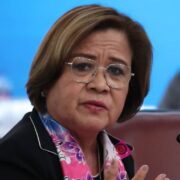Communicating science better

An event that had not occurred in decades devastated my hometown. Tropical storm Kristine led to waist-deep floodwaters that inundated the coastal barangay where I grew up. Residents had to be evacuated, and there was confusion amid the heavy rains and gusty winds. For many, it was unfathomable, as earlier reports had mentioned that northern Luzon would be under higher wind signals than southern Luzon.
What we had was a lesson in poor science communication.
We have come a long way from the advent of electricity that has led to accelerated industrialization, even in the Philippines. But not everyone is on board this train. Remote and neglected areas have yet to experience the advancements brought by science and technology. The benefits of modern science far outweigh the risks, but there remains a gap in making “science work for the people.”
Becoming an expert in a field of science takes years of training. And the more one immerses oneself in a chosen field, the sooner one realizes how much more there is to learn—often with so little time. That’s why I still believe that, more often than not, with age comes wisdom since experiences cannot be learned overnight. There are lessons we’ve come to realize over time. And it takes more time to absorb these lessons and make them part of our way of life.
Take the state weather bureau, the Philippine Atmospheric, Geophysical and Astronomical Services Administration (Pagasa), that used Public Storm Warning Signals to warn of tropical cyclones back then. As of March 2022, the warning system has been called the Tropical Cyclone Wind Signal to emphasize that the parameter being warned about is wind speed. Signal No. 5 was also added. Over time, we have learned to distinguish this from rainfall warnings, which are associated with color codes.
Not everyone easily understands these warnings nor heed them. There are better ways to communicate science than just dumping information and expecting full understanding and compliance from the general public. There is a move toward impact-based forecasting which, as defined by the Climate Centre “combines a forecast of a weather or climate hazard and an assessment of possible impacts including when, where, and how likely the impacts are.” This puts into action the notion of “what’s in it for me?” beyond mere awareness.
The challenge is not on one sector alone. The public, of different socio-economic status, is impacted differently. This goes beyond hazards. For example, one tangible way of measuring electric power reliability from the end-user perspective is the frequency and duration of power interruptions. Reliability here is measured in terms of fewer and shorter power interruptions.
In fact, we have termed power interruptions as brownouts, which actually refer to the low voltage that results in a brownish color of lights before the advent of modern light-emitting diodes, or LED. The proper term is blackout, but this is now used to describe widespread and grid-level power interruptions, which often occur during severe weather. Another misconception is the use of power instead of energy. Electric distribution companies bill us for the energy we consume, not for power.
The lesson to be learned here is that scientific jargons may not fully capture the imagination of the general public and may evolve in meaning over time. Scientific correctness does not necessarily equate to absolute correctness devoid of human experience. Communication is dynamic, and so is the science behind it. The more we understand and refine our knowledge of how things work, the better it serves humanity.
We need to build from the bottom up, with us learning basic science concepts in our basic education. But those deprived of means and opportunities—the poor—often do not finish basic education, with fewer people advancing to higher education. The challenge is not confined to one level because science communication encompasses all social classes and all ages. We cannot be fixated on basic education, where learners are still forming their view of the world.
Conversely, we cannot abandon those who have no formal education. Truth be told, they have survived using lived experiences. Their input should be met halfway for us to avoid parachuting into communities and assuming that what we had learned inside and out is what they need to do.
—————-
Edward Joseph H. Maguindayao is a college instructor in Laguna.

















